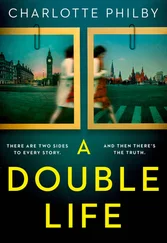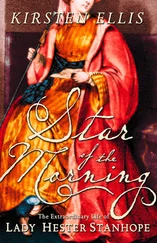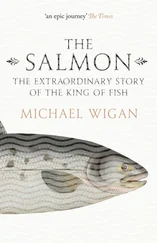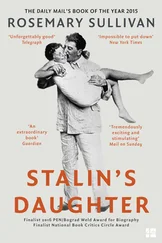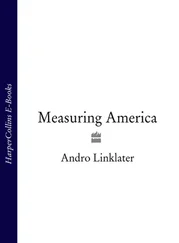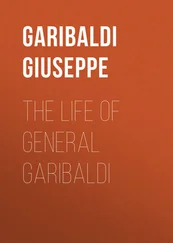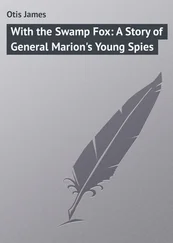21
BURR’S AMBITION
WHAT PREOCCUPIED THE THOUGHTS of every westward- looking American were signs of the imminent collapse of the Spanish empire. As Spain was squeezed harder between Napoléon’s army and Britain’s navy, the fantastic three- hundred-year- old machinery of its colonial administration began to seize up. The fleets carrying silver from Peru and Mexico still sailed twice a year to Cádiz, but soldiers went unpaid for longer, local officials were left unsupervised, and Madrid’s slackening grip was sharply evident in Casa Calvo’s unilateral decision to divert twelve thousand dollars of Mexico’s revenue to Wilkinson without Spain’s direct permission. In similar circumstances in 1787 Miró had not felt able to do more than make the American a loan, while Carondelet’s payments were possible only because they were in line with the existing policy of the royal council. The empire’s shuddering edifice positively invited outsiders to think of what might replace it.
According to Alexander von Humboldt’s recollection of his conversations in 1804, Jefferson speculated that after the Spanish empire disappeared the republic of the United States would become the model for a still larger project, “a future division of the American continent into three great republics which were to include Mexico and the South American states.” But while Jefferson dreamed of the spread of republican virtue, other Americans, inspired by Francisco de Miranda, the Venezuelan-born liberationist and veteran of the Revolution, imagined a general Creole uprising leading to an independent South American empire. The remainder, including Wilkinson and perhaps most adventurers, found it hard to think beyond the mother lodes of silver ore that surfaced repeatedly in the western range of Mexico’s Sierra Madre.
Although Wilkinson shared his information about the different roads to Mexico with President Jefferson, he had already discussed it with another would- be adventurer, the vice president, Colonel Aaron Burr. “To save time of which I need much and have little,” Wilkinson wrote urgently in May 1804 immediately after landing in Charleston, “I propose to take a Bed with you this night, if it may be done without observation or intrusion—Answer me and if in the affirmative I will be with [you] at 30 after the 8th Hour.”
A clandestine meeting, set up without preliminaries, indicated that Burr and Wilkinson already knew each other’s mind, but that their thoughts needed to be kept secret. Since Burr’s house in Richmond Hill lay on the road from Charleston to Washington, it was easy for Wilkinson to break his journey unobserved. The nature of their discussions was never divulged, but they must have concerned the opportunities that Burr might find in the west. In particular, Wilkinson wanted the youthful Claiborne replaced as governor of Louisiana, and his eagerness to meet Burr suggested that the vice president was his preferred candidate as successor.
The timing of their encounter was significant. Burr had another ten months before his term of office ended, but no obvious political future. He had just been defeated in the race for governor of his home state, New York, a result he blamed on the scurrilous allegations about his financial probity made by his bitter political rival Alexander Hamilton. Burr was in a dangerous mood when he met Wilkinson. As Charles Biddle reported, the vice president was ready “to call out the first man of any respectability concerned in the infamous publications concerning him.”
The provocation came just six weeks after his meeting with Wilkinson Hamilton’s comment that Burr was “a dangerous man unfit to be entrusted with the reins of power” was enough for the challenge to be issued, answered, and shots exchanged on the hillside of Weehawken, New Jersey, overlooking the Hudson River. What destroyed Burr’s political career, in the north at least, was the report that Hamilton had intentionally fired wide before the colonel deliberately shot his opponent in the gut.
With a warrant issued for his arrest in New York, Burr took refuge with Charles Biddle in Pennsylvania. Lacking any obvious outlet for his energies, he returned to the topic that Wilkinson had raised. During the rest of the year, they exchanged ciphered messages and held occasional meetings From these emerged the outline of what became known as the Burr conspiracy.
THE CONSPIRATORS MADE AN INCONGRUOUS PAIR. The general growing stouter, increasingly rosy and swollen in the face, and addicted to ever more Ruritanian uniforms; the colonel, tall, elegantly dressed, an eighteenth-century aristocrat, who took it as a truth that “a gentleman is free to do whatever he pleases so long as he does it with style.” John Adams wrote that he had “never known, in any country, the prejudice in favor of birth, parentage, and descent more conspicuous than in the instance of Colonel Burr.” Marriage had made Wilkinson part of the Biddles’ influential circle, but Burr, grandson of the great Calvinist theologian Jonathan Edwards, “was connected by blood,” as Adams put it, “to many leading families in New England.” Wilkinson had never been to college, and most of his life had been spent on the frontier or in the coarse world of licentious soldiery, while Burr, the successful New York attorney and brilliant politician who came within a single vote of being the third president, had been educated at Princeton and had never strayed far from the Atlantic coast, rarely even beyond its law courts and drawing rooms.
Yet they shared some notable characteristics. Both grew up fatherless and indulged by wealthy relatives. Each displayed a mesmerizing ability to win influential friends, outstanding initiative and courage during the Revolutionary War, and in peacetime a taste for extravagance that drove them to stretch morality to the point of illegality in the pursuit of money. In Burr’s case, he sold political favors and made a flagrant attempt to turn the credit-issuing powers of the Manhattan water company into a full banking service. And by the time they began discussing operations in Mexico, both were facing a bleak future, according to one astute observer, the French ambassador, General Louis-Marie Turreau.
“Mr. Burr’s career is generally looked upon as finished; but he is far from sharing that opinion, and I believe he would rather sacrifice the interests of his country than renounce celebrity and fortune,” Turreau told Talleyrand in March 1805. Wilkinson, he wrote, “complains rather indiscreetly, and especially after dinner, of the form of his government, which leaves officers few chances of fortune, advancement, and glory, and which does not pay its military chiefs enough to support a proper style.”
Nevertheless, those who had dealings with Burr and Wilkinson made a sharp distinction between the two. Both Alexander Hamilton and Thomas Jefferson, natural opposites in other matters, shared a visceral antagonism to Burr and his ambitions. Jefferson expressed his dislike circumspectly, noting that from their first encounter in the 1790s “his conduct very soon inspired me with distrust” because Burr had no principles and “was always at market” for political gain. Hamilton, on the other hand, did not mince his words, writing, “[Burr] loves nothing but himself. He is sanguine enough to hope every thing—daring enough to attempt every thing— wicked enough to scruple [at] nothing.” By contrast, despite their doubts about Wilkinson’s financial dealings with the Spaniards, both were ready to entrust him with power, Hamilton by recommending his promotion to major general in 1799, and Jefferson by confirming him as army commander in 1801. If either of the conspirators at Richmond Hill were to betray the other, everything suggested it would be Burr.
WILKINSON’S MAPS AND NOTES SHOWED two obvious ways of entering Mexico from the United States. The first was championed by the French general Victor Collot, who explored the Mississippi Valley in 1796. In his book, Voyage dans l’Amérique Septentrionale , Collot selected Santa Fe as the most desirable point of access. Troops could either descend from the Missouri River in the north, following a line that would become the Santa Fe Trail, or ascend the Arkansas River from the Mississippi. Because the final approach “presents neither mountains nor rivers which might be serious obstacles,” Collot concluded, “one may easily appreciate how important it is for Spain that these two passages be closed.”
Читать дальше



